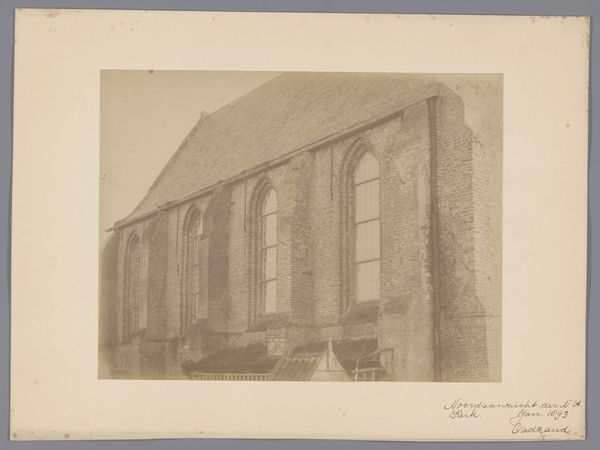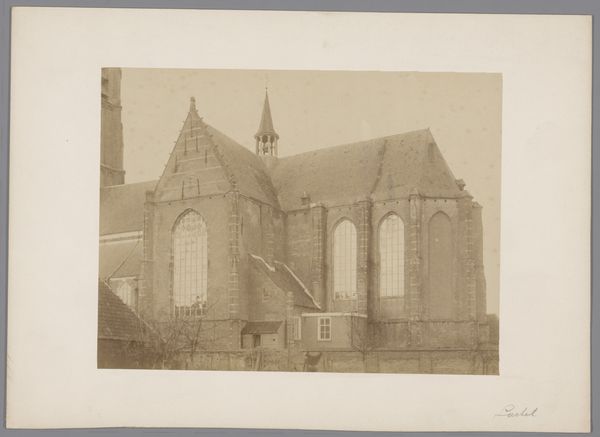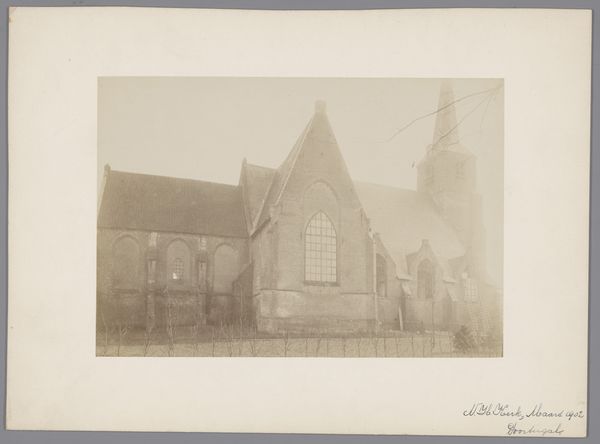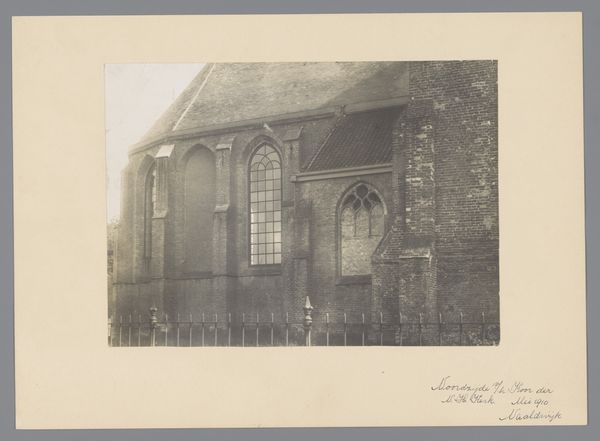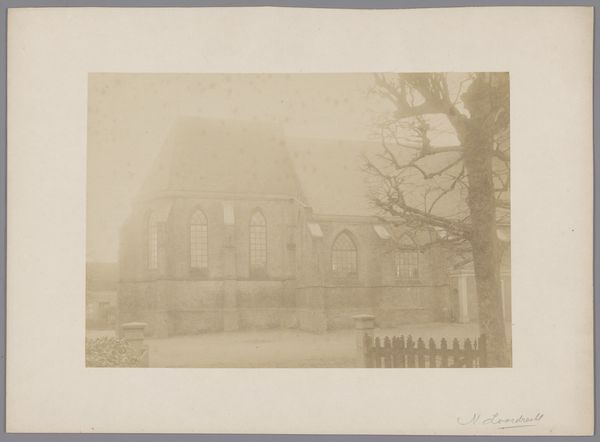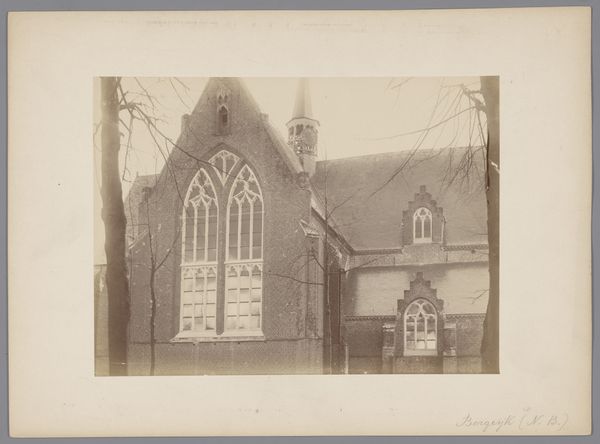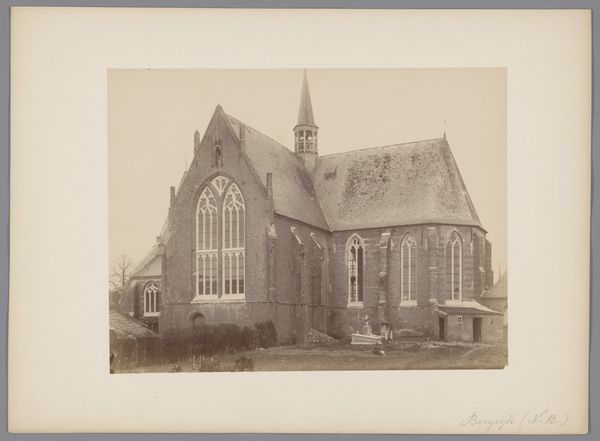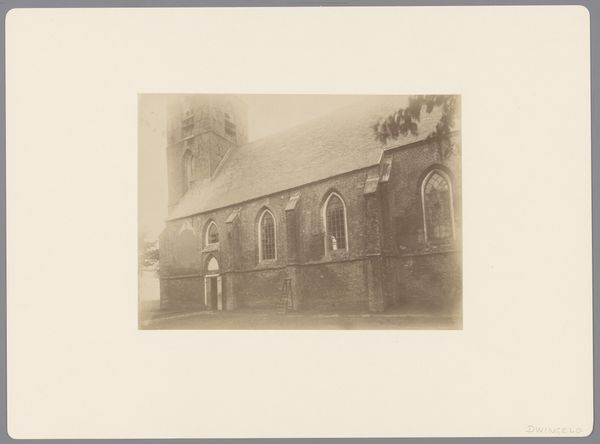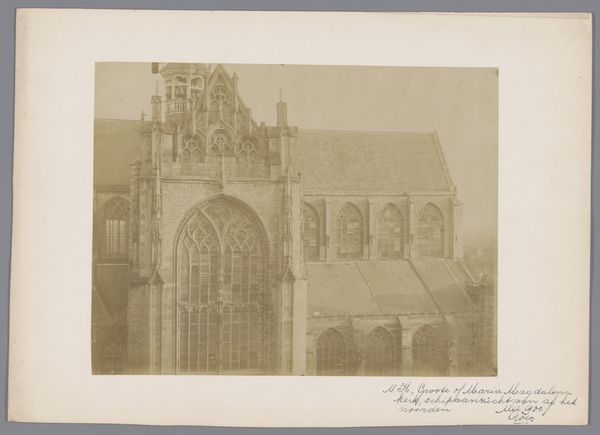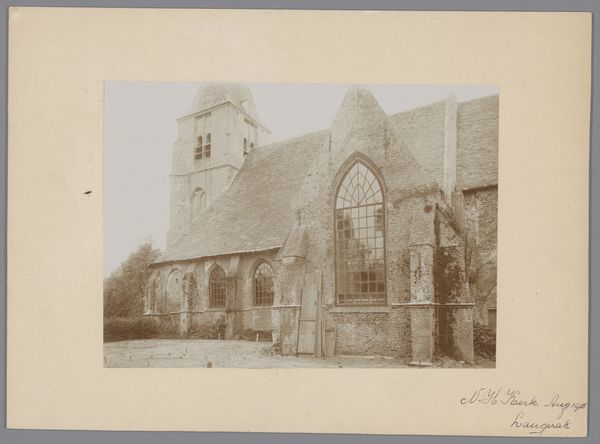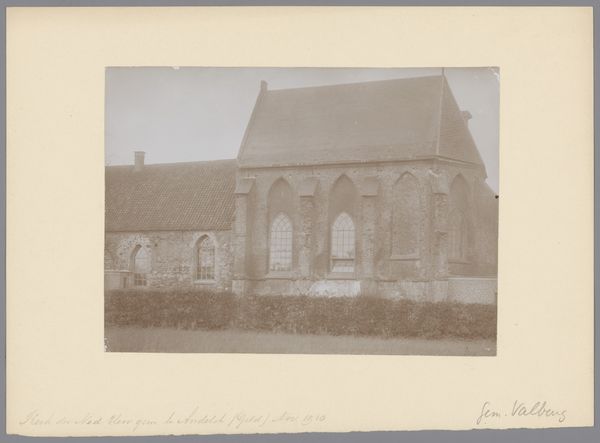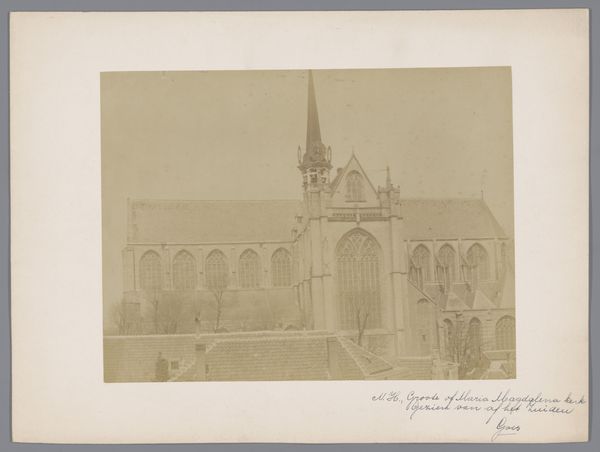
Dimensions: height 162 mm, width 238 mm
Copyright: Rijks Museum: Open Domain
Editor: So, here we have "Noordkapel van de Geerteskerk te Kloetinge," from 1899. It seems to be a photograph of a church chapel, with a muted, almost ethereal quality. What's your perspective on this piece? Curator: The image resonates with the rise of photographic documentation intertwined with heritage preservation. What social values are reflected by documenting religious spaces during a period of societal change? Editor: It feels…deliberate. Were photographs like this used as tools somehow? Curator: Absolutely. Consider this image within the broader context of the late 19th century. It was a time when religious structures often symbolized not just faith, but also political power and cultural identity. Architectural photography provided a means to engage and interpret the values embedded in monuments, thus making it accessible to diverse groups. How does photography serve political goals? Editor: So, photography could shape people’s understanding and engagement with these power structures? Curator: Precisely! This piece invites us to examine the evolving discourse surrounding cultural heritage. What might be the photographer’s motivation for capturing the chapel in this particular manner, given those considerations? Editor: It makes you wonder if they’re not just recording a building, but solidifying a specific, even nostalgic, point of view about that building and the social order. It really reveals a whole set of tensions in that era! Curator: Indeed, recognizing the agency in what appears to be a mere photograph unveils rich intersectional perspectives. Editor: This really deepens my appreciation, seeing it less as a static picture and more as a complex statement! Curator: It's through such explorations that art history finds relevance in today’s society.
Comments
No comments
Be the first to comment and join the conversation on the ultimate creative platform.
